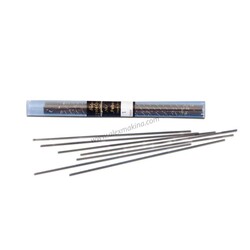Jewelry Saw Blades
The process of making jewelry begins with the right tools and no tool is more important for a jewelry making bench than a jeweler’s saw. It is undoubtedly the most vital tool in a jeweler’s arsenal and helps a jeweler cut into a range of materials including wood, soft metals, fiberglass, and plastic.
Why is a Jewelry Saw Blade Important?
A jewelry saw blade is crucial for making a clean cut in any metal. The jewelry saw blade can cut without bending metal, a common problem with cutting pliers and metal shears. With a jewelry saw blade, jewelers can cut through thick metal and make precise shapes and smooth curves in the metal sheet. Additionally, by sawing a piece of metal with a jewelry saw blade, one can save metal from wastage as it allows the metal to be used for other purposes instead of sanding or filing the metal. With a good jewelry saw blade, one can make jump rings or bead reaming with ease. A jeweler is able to make tube cuttings, pierced and straight cuts.
Choosing the Right Jewelry Saw Blade Sizes
Your first step must be determining the correct jewelry saw blade sizes for your task. This is dependent on the thickness of the material you want to be sawed. If the saw blade size is too large for the metal, it will catch and grab. On the other hand, if it is too small, the blade might dull and be ineffective. Therefore, choosing the appropriate jewelry saw blade sizes is crucial to getting the job done.
A saw blade does not actually cut. Instead, it weakens and then chips away little pieces of the metal. A closer look at the teeth of the blade will show you that the teeth alternate from left to right in what is called a set. This teeth arrangement is so that the chips of metal fall to the sides of the blade. The distance between the outer point of the left tooth and outer point of the right tooth is called the blade thickness.
The blades come in a range of sizes and are recognized by relative numbers. The higher the number in the saw blade, the deeper and thicker the blade is and the fewer teeth it has per inch. Charts online will help you figure out the most common sizes and the equivalent material thickness it should be used for. Once the correct size has been selected, the jeweler will have to string the blade in the saw frame. To check if the tension is right, gently ‘pluck’ the blade – if you hear a ‘ping’ you have the perfect tension. The blade teeth must be facing towards the user and downwards. The basic idea is that the blade must cut through pulling and not through pushing.
Jewelry blades will of course break down over time. But, if one uses the right technique, appropriate lubricant, and the right blaze size, the blade can be used longer.







